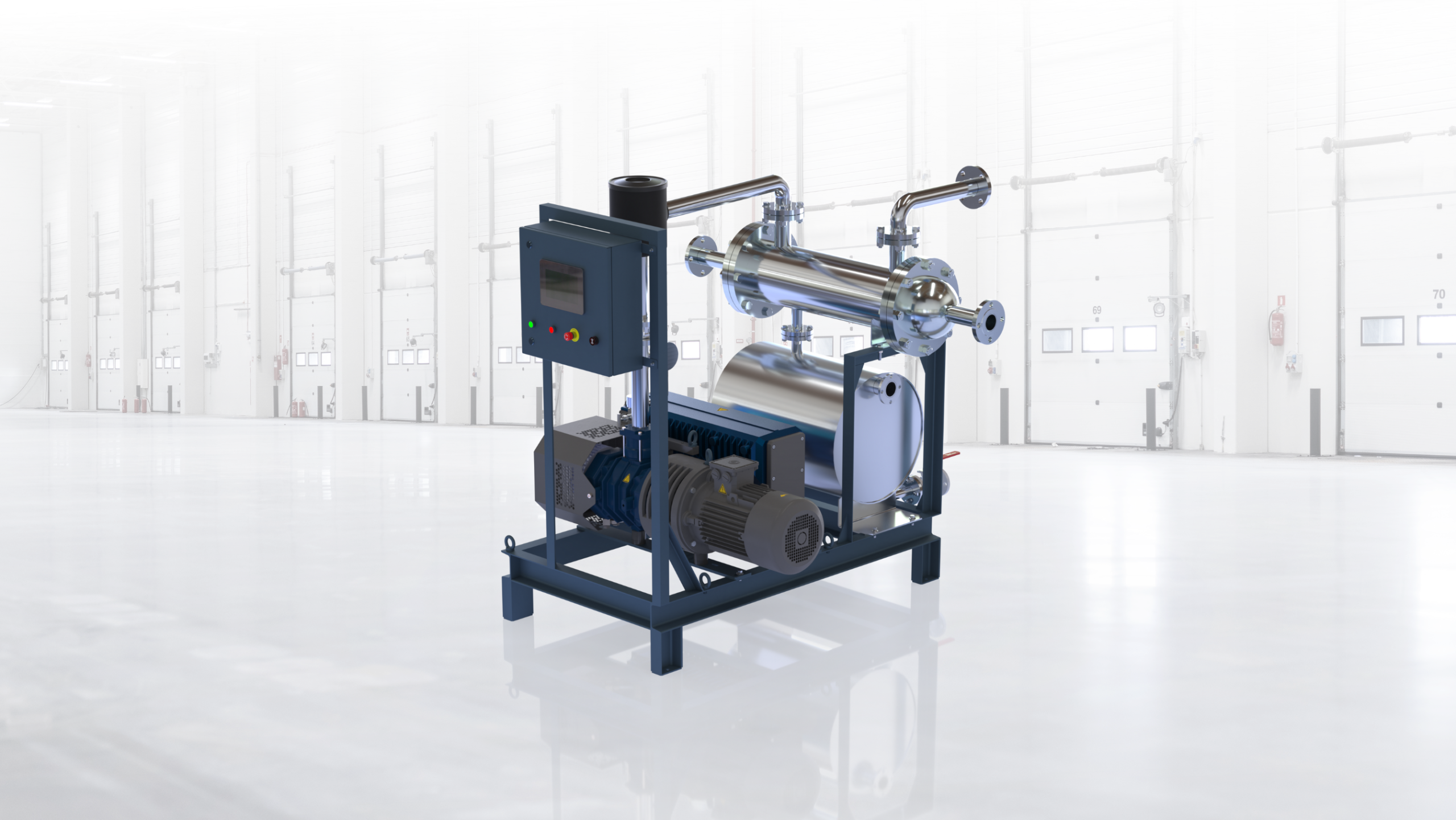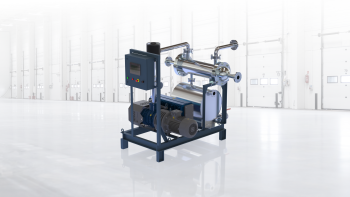Vacuum technology might seem like something out of a sci-fi movie, but it’s actually part of everyday life. Think about the crisp bag of chips you opened last week or the screen on your phone vacuums helped make those possible. This guide, brought to you by Mechvac Technologies, is all about explaining vacuums in a way that’s easy to grasp. It covers what a vacuum is, how it’s made, the tools that create it, where it shows up in the world, and a few basic ideas to tie it all together. No fancy degrees needed just a bit of curiosity!
What is a Vacuum?
A vacuum is basically a space with way less air than what’s outside. Picture using a straw to sip a drink: sucking pulls the liquid up because the pressure drops inside the straw. That’s the gist of a vacuum most of the air gets taken out, leaving a low-pressure zone. Scientists measure this with units like torr or pascal, and the smaller the number, the emptier the space.
Vacuums come in different strengths. Some have a little air left, while others are almost completely empty. Here’s a breakdown:
| Vacuum Level | Pressure Range (torr) | Description |
| Low (Rough) Vacuum | 760 to 1 | Perfect for sealing food bags or shaping plastic. |
| Medium Vacuum | 1 to 0.001 | Handy for cleaner spaces, like certain lab setups. |
| High Vacuum | 0.001 to 0.000000001 | Needed for things like peering at tiny particles. |
| Ultra-High Vacuum | Below 0.000000001 | Used in wild stuff, like smashing atoms together. |
Each type has its own purpose, depending on how empty the space needs to be.
How is a Vacuum Created?
Creating a vacuum means sucking air out of a sealed box or tank. Special machines called vacuum pumps handle this job. They’re not like the vacuum cleaner under the stairs—these are built to pull air out of tight spaces, dropping the pressure inside. Usually, a basic pump starts the process, clearing out most of the air, and then fancier ones step in if the space needs to be super empty.
Types of Vacuum Pumps
Vacuum pumps come in all shapes and sizes, each suited for different tasks. Let’s check out the main kinds:
- Pumps That Grab and Push Gas
These trap some air and shove it out, kind of like scooping water from a bucket. They’re great for simple jobs like sealing packages or drying stuff. A few examples:- Rotary Vane Pumps: A spinning wheel with flaps catches air and moves it out.
- Diaphragm Pumps: A stretchy piece flops up and down to push air.
- Scroll Pumps: Two spirals team up to squeeze air out.
These are the workhorses for lots of everyday needs.
- Pumps That Use Speed
These fling air molecules out with fast-moving parts, almost like a fan on steroids. They shine when a really deep vacuum is the goal. Examples include:- Turbomolecular Pumps: Blades spin crazy fast to knock air away.
- Diffusion Pumps: A hot vapor stream blasts air out.
These are big in high-tech areas, like building computer chips.
- Pumps That Trap Gas
These catch air molecules and hold them on special surfaces, perfect for the emptiest vacuums. Examples:- Cryogenic Pumps: Freezing-cold surfaces make air stick like glue.
- Ion Pumps: Electric zaps grab air particles.
These pop up in super-clean spots, like microchip factories.
Here’s a quick rundown:
| Pump Type | Vacuum Range | Common Uses |
| Grab and Push | Low to Medium | Sealing bags, drying |
| Speed Pumps | High to Ultra-High | Lab research, coatings |
| Trap Pumps | High to Ultra-High | Chip-making, clean rooms |
Picking the right one depends on the job and how much air needs to go.
Where is Vacuum Technology Used?
Vacuums are everywhere, doing cool stuff you might not even notice. Here are some places they show up:
- Science Labs:
Ever wonder how scientists peek at tiny things like germs? Tools like electron microscopes use vacuums to keep the view clear. Space folks also test gear in vacuum chambers to mimic the emptiness up there. - Factories:
Making a phone screen or a shiny lens coating? Vacuums keep dust away and help stick materials together. In food plants, they seal bags to keep your snacks from going stale. - Hospitals:
Vacuums help split blood for tests, assist in surgeries, and keep drugs fresh—think of those vials astronauts might use. - Food World:
Ever tried those lightweight, crunchy astronaut snacks? Freeze-drying with vacuums makes that happen. Regular vacuum packing also keeps meat or coffee fresh longer. - Cars:
Brakes in some cars get a boost from vacuums, making stops smoother and safer. - Space:
Before a rocket blasts off, it’s tested in a vacuum to make sure it won’t flop in space.
Pretty neat how one idea touches so many things, right?
Basic Ideas Behind Vacuum Technology
A few simple concepts help explain how vacuums work:
- Gas Rules:
- Boyle’s Rule: Stretch a space out, and the pressure drops if no new air comes in. That’s the vacuum trick!
- Charles’s Rule: Heat makes gas spread out; cold makes it shrink.
- Ideal Gas Rule: Ties pressure, size, and heat together to predict gas behavior. These rules are like the playbook for vacuums.
- Mean Free Path:
How far an air molecule flies before hitting another. In a vacuum, with fewer buddies around, it’s a longer trip. This matters for things like drying or coating. - Flow Rate:
How fast air moves through pipes. Big pipes mean quicker flow—key for building vacuum systems. - Gas Removal Rate:
How fast a pump clears air out. This decides which pump fits the task.
These are like the ABCs of vacuum know-how.
How to Measure a Vacuum
To check a vacuum, pressure gets measured with special tools. Different ones work for different levels:
| Tool | Vacuum Range | How It Works |
| Manometers | Low to Medium | Squish some gas to see the pressure. |
| Pirani Gauges | Rough to Medium | Test how gas carries heat. |
| Ionization Gauges | High to Ultra-High | Zap gas into ions and measure the buzz. |
Each tool has its sweet spot, so matching it to the vacuum level is a must.
A Quick History of Vacuum Technology
Vacuums have a wild backstory. Back in 1654, Otto von Guericke wowed folks by pumping air out of two metal halves stuck together. Two horse teams pulled and pulled—no dice! That showed vacuums mean business.
By the 1800s, vacuums lit up the world—literally. Edison’s light bulbs lasted longer with air pumped out, keeping the glow alive. Later, they powered early TVs and radar.
In the 1900s, vacuums advanced, enabling the splitting of atoms and the launch of spaceships. Now, they’re in tiny tech and cosmic quests. Who knew an empty space could do so much?
Safety and Best Practices
Vacuums can be finicky, so here’s some down-to-earth advice:
- Setting Up:
Stick to the equipment manual. Seal everything tight—leaks ruin the fun. - Staying Safe:
Gloves and goggles are smart when tinkering with vacuum gear. Sharp bits or pressure pops can surprise you. - Pressure Watch:
Glass parts? Handle with care—they can shatter if the vacuum’s too strong. Let air back in slow and steady. - Keep It Tidy:
Hunt for leaks often, top off pump oil if needed, and check moving parts. Gauges need a glance too—wrong readings mess things up.
These tips keep the vacuum humming and everyone safe.
Conclusion
Vacuum technology is quietly amazing, shaping gadgets, food, and even space adventures. This guide has walked through the basics: what vacuums are, how they’re made, the pumps that do it, where they pop up, and some ideas to make it click. Mechvac Technologies loves being part of this world, building tools for all sorts of vacuum jobs. Hopefully, this rundown sparks some interest whether you’re new to it or just love a good “how it works” story!







